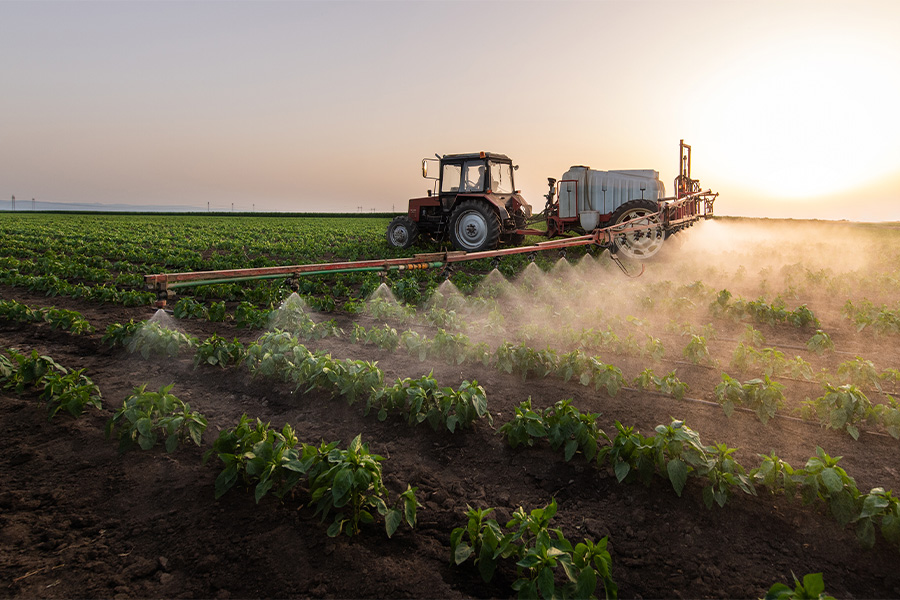General Agriculture
-

Irrigation pumping plant performance can be easily determined in the field with a few simple calculations. Standard figures can reasonably be expected from well-designed, well-maintained systems.
Kerry Harrison and Anthony Tyson
|
-

Energy inputs for irrigation pumping frequently exceed the energy used for all other crop production practices. This fact, coupled with rapidly increasing fuel and energy costs, causes irrigation farmers to look for ways to reduce energy consumption. Careful consideration should be given to selecting a pump that will deliver water to the system with the greatest possible efficiency. After installation, pump performance should be watched closely and evaluated, with steps being taken as needed to adjust, repair or replace inefficient pumping equipments.
Kerry Harrison
|
-

It is estimated that 2002 plant disease losses, including control costs, amounted to approximately $576.65 million. The value of the crops used in this estimate was approximately $4.376 billion, resulting in a 13.18 percent total disease loss across all crops included in this summary.
Jean Williams-Woodward
|
-

It is estimated that 2003 plant disease losses, including control costs, amounted to approximately $682.67 million. The value of the crops used in this estimate was approximately $5.399 billion, resulting in a 12.64 percent total disease loss across all crops included in this summary.
Jean Williams-Woodward
|
-

To schedule irrigation for most efficient use of water and to optimize production, it is desirable to frequently determine the soil water conditions throughout the root zone of the crop being grown. A number of methods for doing this have been developed and used with varying degrees of success. In comparison to investment in irrigation equipment, these scheduling methods are relatively inexpensive. When properly used and coupled with grower experience, a scheduling method can improve the irrigator’s chances of success.This publication covers the working principles of currently used methods for scheduling irrigation.
Kerry Harrison
|
-

Research conducted on drip-irrigated pecans in Georgia over the past several years has shown that drip irrigation is highly beneficial even in wet years. The objective of drip irrigation is to supply each plant with sufficient soil moisture to meet transpiration demands. Drip irrigation offers unique agronomic, agrotechnical and economic advantages for the efficient use of water.
Kerry Harrison
|
-

The UGA EASY (Evaporation-based Accumulator for Sprinkler-enhanced Yield) Pan Irrigation Scheduler is designed to provide in-field monitoring of crop water needs in humid areas for a fraction of the management time and cost associated with other irrigation scheduling methods. If a farmer is not currently using a more sophisticated irrigation scheduling method, this unit is a simplified, low cost alternative. The UGA EASY Pan Irrigation Scheduler is designed to help you keep track of when your next application is needed, so you can avoid applying too much or too little water. The overall goal is to be more efficient in the use of irrigation water.
Kerry Harrison and Wesley Porter
|
-

B 979
Orchard Sprayers
This publication contains comprehensive information about air blast and weed control sprayers for orchards.
Paul Sumner
|
-

B 1158
Sprayer Nozzle Selection
Nozzle selection is one of the most important decisions to be made related to pesticide applications. The type of nozzle affects not only the amount of spray applied to a particular area, but also the uniformity of the applied spray, the coverage obtained on the sprayed surfaces, and the amount of drift that can occur. Each nozzle type has specific characteristics and capabilities and is designed for use under certain application conditions. This publication describes the types that are commonly used for ground application of agricultural chemicals, including flat-fan, even flat-fan and cone nozzle.
Paul Sumner
|